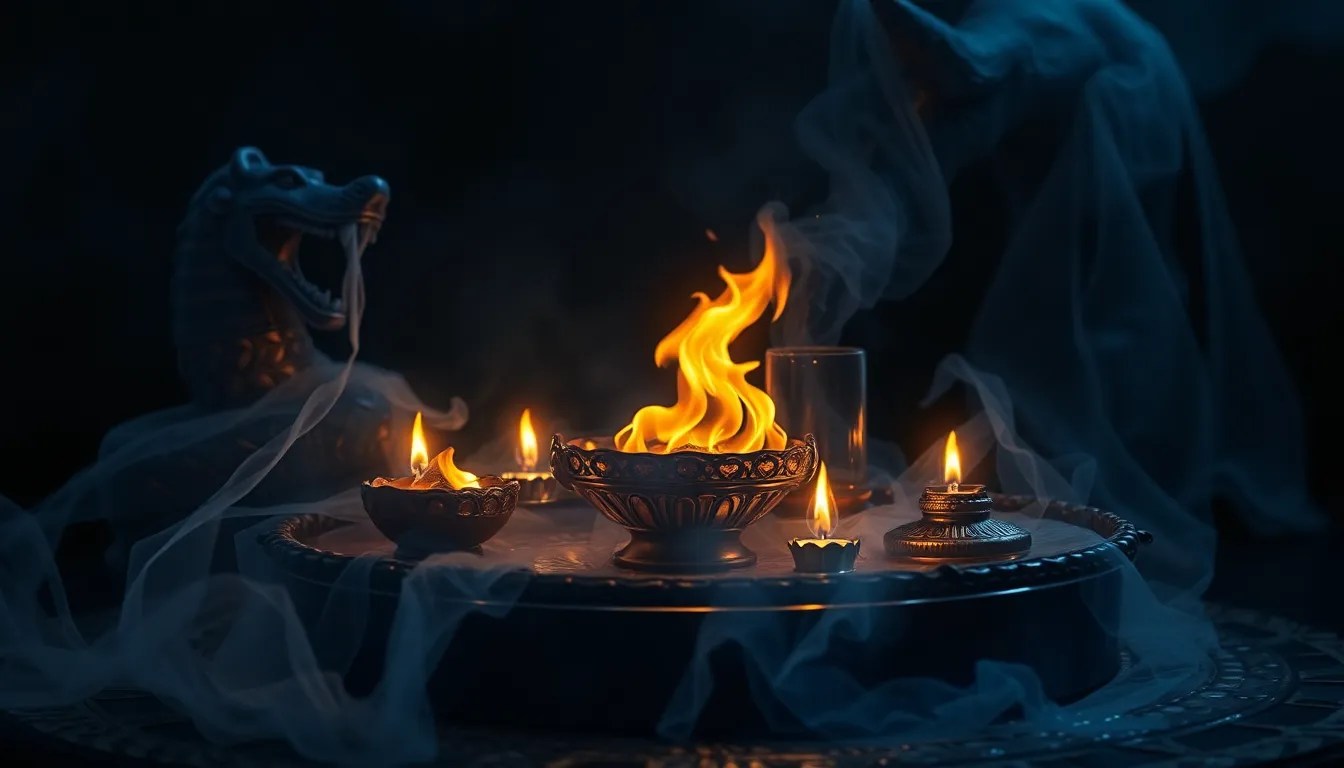The Importance of Offerings in Egyptian Spiritual Practices
I. Introduction
Ancient Egyptian spirituality is a rich tapestry woven from mythology, ritual, and daily life, emphasizing the relationship between the mortal and the divine. Central to this belief system is the practice of offerings, which were seen as essential acts of devotion and respect toward the gods and the deceased. This article aims to explore the significance of offerings in ancient Egyptian culture, their historical context, types, rituals, and their enduring legacy in modern spiritual practices.
II. Historical Context of Offerings
The practice of making offerings has evolved significantly throughout ancient Egyptian history. Initially, offerings were simple and personal, often consisting of basic foodstuffs. However, as the civilization developed, so did the complexity and variety of offerings.
A. Evolution of offering practices in ancient Egypt
Over time, the Egyptians began to create elaborate rituals surrounding offerings. The Old Kingdom (c. 2686–2181 BCE) marked a significant period where offering practices became formalized, particularly in funerary contexts.
B. Key periods in Egyptian history and their influence on offerings
- Old Kingdom: Emphasis on pyramid building and funerary offerings.
- Middle Kingdom: Integration of personal piety and the expansion of tomb offerings.
- New Kingdom: The peak of complex rituals, including offerings to both gods and the pharaohs.
C. Archaeological findings related to offerings
Archaeological excavations have uncovered numerous instances of offerings, from simple bowls of food to elaborate jewelry placed in tombs. These findings provide invaluable insights into the spiritual practices and daily life of the ancient Egyptians.
III. Types of Offerings
Offerings in ancient Egypt can be categorized into three main types, each serving distinct purposes within spiritual and funerary contexts.
A. Food and drink offerings
Food and drink were the most common offerings, reflecting the belief that the gods and deceased required sustenance. Typical offerings included:
- Bread
- Beer
- Meat
- Fruits and vegetables
B. Symbolic offerings (e.g., flowers, incense)
Symbolic offerings played a crucial role in rituals, representing purity and devotion. Common symbolic offerings included:
- Lotus flowers
- Incense
- Perfumes
C. Material offerings (e.g., jewelry, artifacts)
Material offerings, such as jewelry and artifacts, were often included in tombs to accompany the deceased into the afterlife. These items signified wealth and status, reflecting the beliefs regarding the afterlife.
IV. Rituals Surrounding Offerings
The act of making offerings was embedded within a series of rituals that underscored their importance in Egyptian spirituality.
A. The role of priests and priestesses
Priests and priestesses were responsible for conducting offering rituals, ensuring that the offerings were made according to traditional practices and with the proper reverence.
B. Daily rituals and festivals involving offerings
Daily rituals included morning offerings to gods, while festivals provided opportunities for communal offerings. These events reinforced community ties and collective faith.
C. The significance of timing in offering rituals
Timing was critical in offering rituals, with certain times of day and specific lunar phases considered more auspicious for making offerings to the gods.
V. Spiritual Beliefs Connected to Offerings
The act of offering was deeply intertwined with ancient Egyptian spiritual beliefs.
A. Connection between offerings and the afterlife
Offerings were believed to ensure a successful transition to the afterlife for the deceased, providing them with the necessary sustenance on their journey.
B. Offerings as a means of appeasing deities
Offerings served as a means to appease and gain favor from the gods, ensuring their protection and blessings in the lives of the living.
C. The belief in reciprocity between the living and the divine
There was a strong belief in reciprocity; the act of offering was seen as a way for the living to maintain a relationship with the divine, expecting blessings in return for their devotion.
VI. Offerings in Funerary Practices
Offerings held particular significance in funerary practices, marking the transition from life to the afterlife.
A. Importance of offerings in tombs and burial sites
Tombs were often filled with offerings, which were believed to accompany the deceased and ensure their comfort in the afterlife.
B. Items commonly found in burial offerings
Common burial offerings included:
- Food and drink
- Personal belongings
- Amulets for protection
- Statues of servants to serve the deceased
C. Case studies of significant tombs and their offerings
Excavations of notable tombs, such as that of Tutankhamun, revealed a wealth of offerings that provide insight into the beliefs and practices surrounding death in ancient Egypt.
VII. Modern Interpretations and Practices
The traditions of making offerings endure in contemporary Egypt, reflecting the ancient practices that have been adapted over time.
A. Continuation of offering traditions in contemporary Egypt
Modern Egyptians often engage in offering practices during religious celebrations, continuing the legacy of their ancestors.
B. Influence of ancient practices on modern spiritual beliefs
The influence of ancient Egyptian spiritual practices can be seen in the rituals of both Islamic and Coptic Christian communities in Egypt today.
C. The role of offerings in current Egyptian religious practices
Offerings remain a vital part of worship, symbolizing gratitude and devotion to God, and reflecting the deep-rooted traditions of the past.
VIII. Conclusion
The significance of offerings in Egyptian spirituality cannot be overstated. They served as a crucial link between the living and the divine, playing a fundamental role in both daily life and funerary practices. The enduring legacy of these offering practices reminds us of the importance of cultural and spiritual traditions. It calls us to appreciate and respect the rich tapestry of ancient beliefs that continue to influence modern spiritual life.
